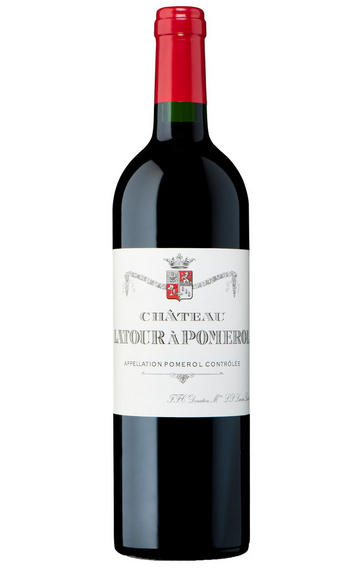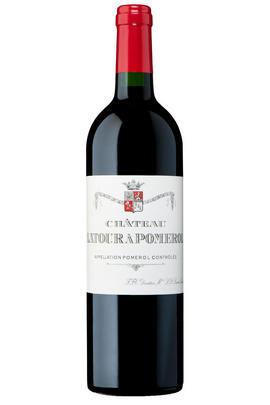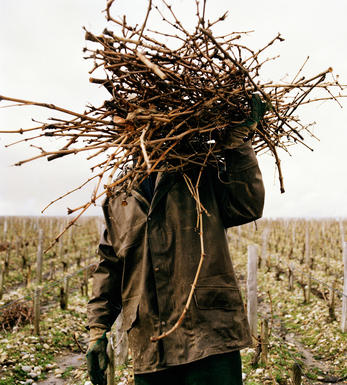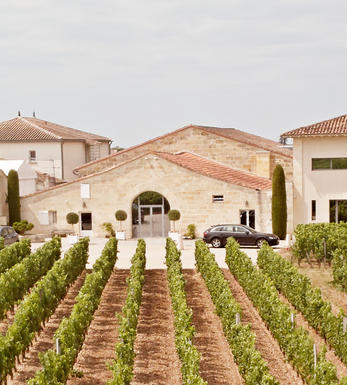
2008 Château Latour-à-Pomerol, Pomerol, Bordeaux

Critics reviews
Robert M. Parker, Jr. - 02/05/2011
About this WINE

Chateau Latour a Pomerol
Château Latour à Pomerol is one of the leading Pomerol properties and is now run and administered by Jean-Pierre Moueix of Pétrus and Trotanoy fame.
Latour à Pomerol consists of just under 8 hectares of vineyards split in to two plots: the first is known as Les Grandes Vignes and is located on a gravel outpost next to the Church of Pomerol. The second plot lies on sandy, lighter soils and is to be found on the western side of the Pomerol plateau.
Latour a Pomerol's grapes (90% Merlot, 10% Cabernet Franc) are hand harvested and then fermented in temperature controlled concrete vats. The wine is then matured in small oak barrels (50% new) for 18 months. It is bottled unfiltered.
Latour á Pomerol produces sumptuous, meaty, concentrated and full-bodied Pomerols that often require at least 10 years of cellaring. In the context of other top class Pomerols they remain underpriced.

Pomerol
Pomerol is the smallest of Bordeaux's major appellations, with about 150 producers and approximately 740 hectares of vineyards. It is home to many bijou domaines, many of which produce little more than 1,000 cases per annum.
Both the topography and architecture of the region is unremarkable, but the style of the wines is most individual. The finest vineyards are planted on a seam of rich clay which extends across the gently-elevated plateau of Pomerol, which runs from the north-eastern boundary of St Emilion. On the sides of the plateau, the soil becomes sandier and the wines lighter.
There is one satellite region to the immediate north, Lalande-de-Pomerol whose wines are stylistically very similar, if sometimes lacking the finesse of its neighbour. There has never been a classification of Pomerol wines.
Recommended Châteaux : Ch. Pétrus, Vieux Ch. Certan, Le Pin, Ch. L’Eglise-Clinet, Ch. La Conseillante, Ch. L’Evangile, Ch. Lafleur, Trotanoy, Ch. Nenin, Ch. Beauregard, Ch. Feytit-Clinet, Le Gay.

Merlot/Cabernet Franc
Merlot and Cabernet Franc are grape varieties commonly used in Bordeaux-style blends, particularly in the Bordeaux region of France. When these two grapes are blended, they can create a wine that combines the best characteristics of each variety.
Merlot is known for its smoothness, soft tannins, and ripe fruit flavours. It often contributes black cherry, plum, and chocolate flavours to the blend. The grapes are relatively easy to grow and ripen earlier than other Bordeaux varieties, making them versatile for blending.
Cabernet Franc, on the other hand, adds structure, depth, and complexity to the blend. It typically brings aromas of red fruits such as raspberry and strawberry, along with herbal notes like bell pepper and tobacco. These grapes have thinner skins and can be more challenging to cultivate, requiring specific growing conditions to reach their full potential.
When Merlot and Cabernet Franc are combined, the result is a well-balanced wine with various flavours and aromas. The blend often exhibits a Bordeaux wine's medium to full body, along with a smooth texture and moderate tannins. The specific flavour profile can vary depending on the proportions of each grape in the blend and the terroir and winemaking techniques employed.


Buying options
Add to wishlist
Description
Like in many years this wine exhibits a wonderful concentration of dark fruits, with bags of tannin and a firm structure. Like all the best 2008's the fruit is beguiling, juicy and seductive, without any hints of green under ripe fruit. Expect this wine to reward long term cellaring. Very good indeed. 2015-2030
wine at a glance
Delivery and quality guarantee